AGPs and pectins during cork oak ovule development
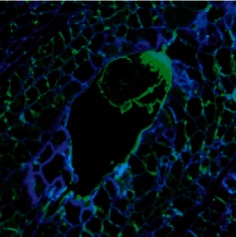
Quercus suber is an extremely important forest species in European Western Mediterranean regions, due to its ecological value and economic potential, allowing local sustainable use of natural resources. Although it has a long and complex reproductive cycle and recalcitrant seeds, little is known about what occurs during female gametogenesis. The plant cell wall’s main components arabinogalactan proteins (AGPs) and pectins perform common functions in cell differentiation and organogenesis of reproductive structures, acting as signalling molecules, in sporophyte–gametophyte transition and in pollen–pistil interactions. Lopes et al. (pp. 949–961) assessed the distribution of these molecules during cork oak ovule development.
Leaf density contributes the major variation of leaf mass per area in rice
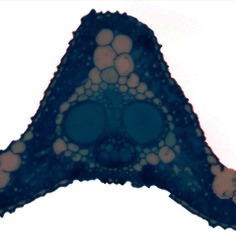
Understanding the variation of leaf anatomy and its influence on photosynthesis is very important for yield improvement. Xiong et al. (pp. 963–971) found that leaf mass per area (LMA) varies greatly among rice genotypes, and the variation is mainly determined by leaf density rather than leaf thickness. Moreover, the responses of LMA and photosynthesis to nitrogen supplement are genotype dependent and are also mainly determined by leaf density. The results highlight the importance of leaf density in leaf anatomy and photosynthesis.
Pollination drop proteins and ovule transcripts of Cephalotaxus
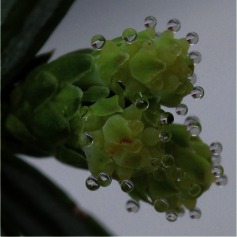
Most gymnosperms produce an ovular secretion during reproduction, the pollination drop. In the conifer Cephalotaxus koreana, Pirone-Davies et al. (pp. 973–984) examine the proteome of the pollination drop and the transcriptome of the ovule. Identified proteins have putative functions of defence, polysaccharide metabolism, and pollen tube growth and guidance, but also novel functions such as starch and callose degradation. Transcriptome data provide insights into multiple metabolic processes that occur within the ovule and the drop just before fertilization including drop formation, ovule development, and conspecific pollen recognition. This is the first published ovule transcriptome of any gymnosperm.
Guard cells first, then epidermis
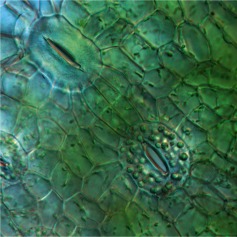
Stomata in the moss Funaria are regularly spaced at the base of the capsule. Merced and Renzaglia (pp. 985–994) describe the patterning and distribution of stomata and how they are coordinated with the formation of substomatal cavities and spaces in the sporophyte. Unlike Arabidopsis, stomata in moss do not develop from a meristem-like cell that continuously divides. Instead guard mother cells differentiate into guard cells from non-contiguous protodermal cells arranged in files. The surrounding epidermal cells divide after stomata are formed in synchrony with capsule expansion. Differentiation of guard cells before the rest of the epidermis ensures that stomata are spaced apart from each other.
Spatial distribution of genetic variation in the flower colour polymorphic Iris lutescens
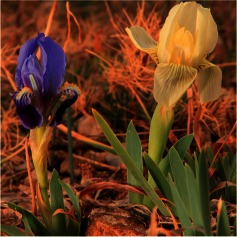
Flower colour polymorphism in plants had been used as a classic model for understanding the importance of neutral processes versus natural selection in population differentiation. Iris lutescens (Iridaceae) is a widespread species in the northern Mediterranean basin, which shows a stable and striking purple–yellow flower colour polymorphism. Using an extensive sampling over the distribution range of the species, Wang et al. (pp. 995–1007) provide evidence that genetic drift contributed to monomorphism in Spain, while gene flow between adjacent populations seems to be an important factor maintaining populations polymorphic in the South of France. Overall, neutral processes contribute to patterns of spatial variation for flower colour in I. lutescens.
Origin of the bifurcating style in Asteraceae
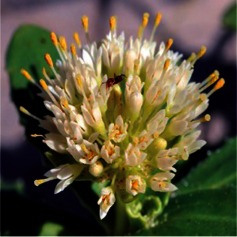
One of the most remarkable reproductive structures of the members of the plant family Asteraceae is the style. Katinas et al. (pp. 1009–1021) examine the morphology and distribution of lipophilic compounds of the styles in the early branching lineages of Asteraceae and its sister families Goodeniaceae and Calyceraceae. Their results are put in a phylogenetic framework to discuss the relevance of style features in the evolution of these families. They conclude that vein branching reduction, connation and elongation, and papillae redistribution were steps leading to the bilobation and bifaciality of the Asteraceae styles, keystone changes for the family’s evolutionary success.
Phylogeny and genome sizes of Betula
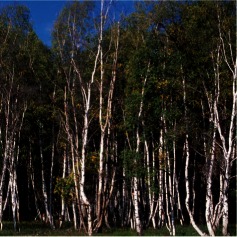
The genus Betula (birches) is widely distributed in the northern hemisphere from the arctic to the tropics. Its woody species are an important component of many ecosystems, and of economic value. The genus was recently subjected to taxonomic revision in a monograph by Ashburner and McAllister (Kew Press, 2013). Wang et al. (pp. 1023–1035) provide a phylogenetic tree and genome size measurements for living collections of Betula collected and curated by the monograph authors. This allows assessment of the higher level taxonomic groupings of the genus, and of previously published GenBank accessions of Betula species.
Polar growth and the development of aquatic carnivorous plants
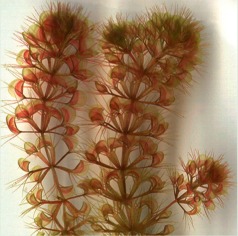
Cytokinin and auxin biosynthesis and distribution patterns have been studied intensively in many terrestrial plant species. Until now, no direct phytohormonal screening has been carried out in rootless, aquatic, carnivorous plants. Šimura et al. (pp. 1037–1044) present here insight into cytokinin and auxin levels, their distribution and relative abundance in segmented shoots and turions of Aldrovanda vesiculosa and Utricularia australis, which exhibit very rapid apical growth with simultaneous senescence of basal parts of shoots. Although both species showed similar trends in basipetal decrease of active cytokinins and in the cytokinin-to-auxin ratio, our detailed metabolic analysis revealed interesting differences in the cytokinin regulation.
Standardization and validation of leaf wetness traits
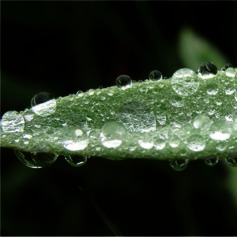
Leaf wetness traits have often been used to describe ecophysiological and ecohydrological processes. However, the effect of droplet size when measuring these traits and their use as proxies for processes such as leaf water uptake have rarely been evaluated. Matos and Rosado (pp. 1045–1052) explored these missing links and found the water droplet volume does matter when measuring leaf wetness traits. Leaf wetness traits were not related to leaf water uptake. They concluded that the standardization of droplet volumes and the validation of leaf wetness traits are necessary before using them to infer ecophysiological processes.
Hawaiian seedlings fail to recover from simulated herbivory

Herbivory is a key threat to seedlings, driving plant community composition and the evolution of seedling defences. In Hawaii, seedling herbivores are not part of the native fauna, but have recently become prevalent due to invasions of herbivorous molluscs and mammals, which target native Hawaiian seedlings. Using a greenhouse experiment, Barton (pp. 1053–1062) found that Hawaiian seedlings have limited compensatory growth following simulated herbivory despite demonstrating induced shifts in photosynthesis and biomass allocation to roots vs. shoots. Ultimately, this led to low tolerance across the entire group of ten species. Species in the Campanulaceae were particularly intolerant of seedling damage due to high rates of non-photochemical quenching.
Concurrent measurements of stomatal conductance, sap pH and hydraulic conductance in Eucalyptus globulus clones
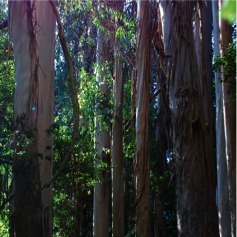
Selected E. globulus clones can grow to a height of up to 14 m in 3 years, receiving an average rainfall of 630 mm year–1 with a 4-month summer drought. Working with plants under a year old from five clones, Hernández et al. (pp. 1063–1071) found that xylem sap pH decreased as water potential and stomatal conductance decreased under increasing vapour pressure deficits. Stomata closed after a significant amount of hydraulic conductance was lost, but precluded water potential from decreasing below –1.8 MPa. These results suggest a coordinated response aimed at preserving the hydraulic sufficiency of the stem and resulting in sap acidification.
Something in the air? Volatiles influence mollusc attack on seedlings

Although pulmonate molluscs are the principal seedling herbivores in temperate grasslands and agriculture, we understand little about what drives seedling selection. Shannon et al. (pp. 1073–1082) examined the roles of constitutive chemical defences (glucosinolates) and volatiles (volatile organic compounds (VOCs)) in the attractiveness of oilseed rape (Brassica napus) seedlings to snails (Helix aspersa). While glucosinolates had no effect, VOCs related to snail selective preferences were identified and a blend of ‘repellent’ VOCs (mainly green leaf volatiles) reduced snail selection in olfactometer choice tests. The study highlights the possibility of modifying the VOC profile of crop seedlings to reduce damage by agricultural pests.
Novel genetic sources of salinity tolerance in rice: molecular and physiological characterization
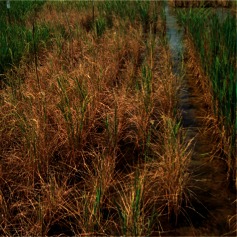
A diverse set of rice accessions was characterized for diversity using SNP markers and phenotyped to identify novel sources of salt tolerance. Three major clusters corresponding to indica, aus, and aromatic subgroups were identified. Pokkali accessions were in indica, as the largest subgroup, while Bangladeshi landraces were in a different sub-cluster. Rahman et al. (pp. 1083–1097) identified seven novel salt-tolerant landraces that are genetically and physiologically distinctive, providing sources for new QTLs/alleles for use to breed better salt tolerant varieties. The diversity observed suggests multiple mechanisms can be combined for higher salt tolerance.


